

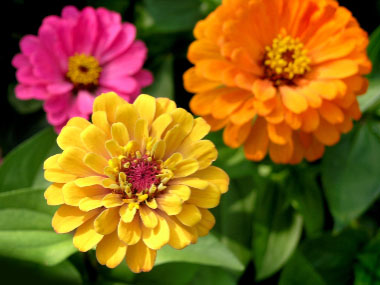
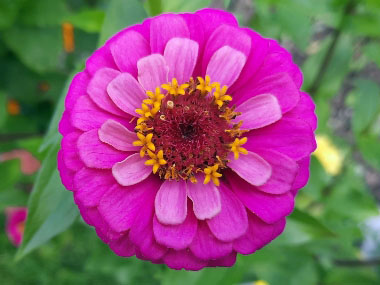
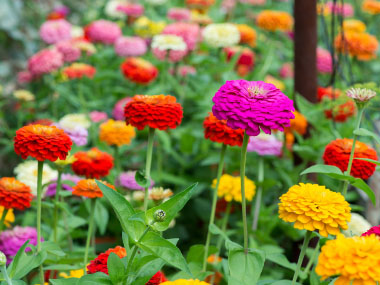
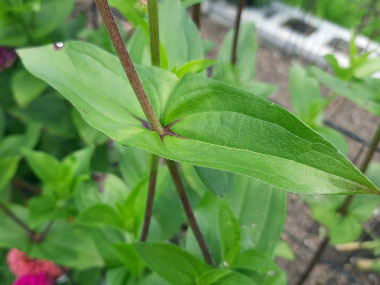

To support our efforts please browse our store (books with health benefits, etc.).
Zinnias are edible, though they tend to have a bitter taste that makes them better suited for garnishes or for use in teas with other herbs. You can add their petals to salads, desserts, or use them as flower confetti to add color to almost anything including a charcuterie board. If you leave some in your garden, the bees, butterflies, and beneficial wasps will love these. There are a variety of colors and they bloom from June up until about the first frost.
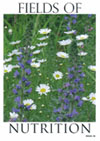 Fields
of Nutrition has medicinal benefits and vitamin/mineral content of Zinnia.
Fields
of Nutrition has medicinal benefits and vitamin/mineral content of Zinnia.
Seed Life Cycle
Zinnia elegans are annuals. There are other species of zinnias that are perennials such as Zinnia grandiflora also edible).
Colours
Zinnias come in nearly all colors, including red, yellow, orange, white, pink, purple, green, lavender, and cream.
Height
These zinnias typically grow 30cm to 1 metre tall (1 to 3') (less frequently to 120cm or 4') tall. Stems are upright, hairy, and they have branching stems. Thanks to their long stems, they also make perfect cut flowers.
Health Benefits
Zinnia elegans contains diverse chemical compounds including sterols, alkaloids, sesquiterpenes, diterpenes, and flavonoids such as kaempferol, quercetin, and apigenin. The plant also contains amino acids such as (iso)leucine, phenylalanine, and tryptophan, and is a source of compounds with potential antioxidant and other medicinal properties. It has anti-inflammatory properties. Zinnia flowers may help with throat irritation and slight coughs. Zinnias also have P-coumaric acid (this exhibits antioxidant, anti-inflammatory, and antimicrobial properties).
Dye
Zinnia elegans flowers produce tan, beige, and soft yellow dyes; sadly, not the outstanding colors of their blooms. To dye with zinnias, a large quantity of blossoms are needed, about twice the weight of the material that is being dyed (2:1 ratio).
Similar Plants
Dahlias.
Winter Survival Food Handbook

PDF Plant Magazines
Types of Wild Food
Geographic Zones Seasons
Disclaimer
EdibleWildFood.com is informational in nature. While we strive to be 100% accurate, it is solely up to the reader to ensure proper plant identification. Some wild plants are poisonous or can have serious adverse health effects.
We are not health professionals, medical doctors, nor are we nutritionists. It is up to the reader to verify nutritional information and health benefits with qualified professionals for all edible plants listed in this web site. Please click here for more information.
Why Edible Wild Food?
- Food costs are rising
- Free, wild food is readily abundant
- Wild food adds nutrition to your diet
- Wild food can help treat various medical conditions





